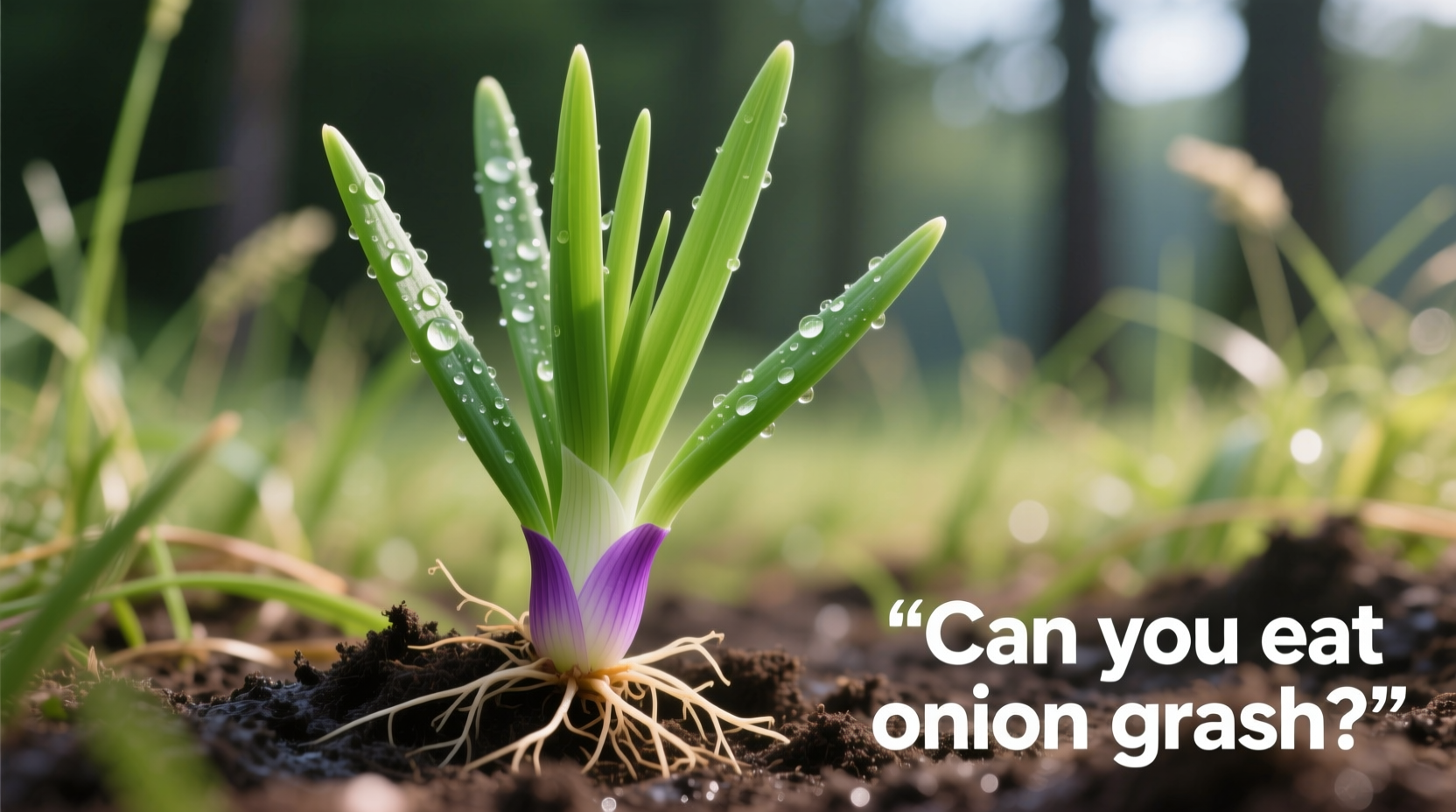What Exactly Is Onion Grass and Why It Matters
Onion grass (Allium vineale) isn't actually a grass at all—it's a wild relative of cultivated onions and garlic that grows in lawns, fields, and disturbed areas across North America, Europe, and Australia. Recognizing this plant could transform your backyard into a free source of flavorful ingredients while helping you avoid potentially dangerous look-alikes.
Positive Identification: Your Safety Checklist
Before harvesting any wild plant, positive identification is non-negotiable. Onion grass has several distinctive features that set it apart from toxic imposters:
- Distinct onion or garlic aroma when crushed (the most reliable indicator)
- Hollow, cylindrical leaves that grow in clusters from the base
- Small pink or purple flower clusters that appear in late spring
- Bulbils or small bulbs that form at the base of the plant
| Feature | Edible Onion Grass | Poisonous Look-alike (Death Camas) |
|---|---|---|
| Smell | Strong onion/garlic scent | No distinctive odor or unpleasant smell |
| Leaves | Hollow and round in cross-section | Solid and flat or V-shaped |
| Flowers | Pink or purple clusters | White or yellow clusters |
| Bulb | Small, onion-like with papery covering | Round, fleshy with no onion layers |
According to the USDA Plants Database, Allium vineale is documented as a non-native species that has naturalized across most of the United States. Cornell University's Department of Horticulture confirms its edibility when properly identified, noting that "the entire plant is edible with a flavor reminiscent of mild onions" (Cornell Cooperative Extension).

When and Where to Harvest Safely
Timing and location significantly impact both flavor and safety. The best time to harvest onion grass is early spring when the leaves are tender and the onion flavor is mild. As the plant matures and prepares to flower, the leaves become tougher and more pungent.
Always follow these location guidelines:
- Harvest only from areas you know haven't been treated with pesticides or herbicides
- Avoid areas near roadsides where plants may absorb pollutants
- Never harvest from public parks or nature preserves without permission
- Choose plants growing in soil you believe to be clean and uncontaminated
Culinary Uses: From Backyard to Plate
Once properly identified, onion grass can enhance numerous dishes with its subtle allium flavor. Unlike cultivated onions, wild onion grass offers a more delicate taste that works well in raw applications.
Try these preparation methods:
- Raw in salads - Chop fresh leaves and add to green salads for a mild onion flavor
- Infused vinegars - Steep leaves in vinegar for 2-3 weeks to create flavorful dressings
- Pesto variations - Substitute for some basil in pesto recipes
- Herb butter - Mix finely chopped leaves with softened butter for bread or vegetables
- Flavorful garnish - Use whole leaves as a decorative and tasty topping
The University of California Agriculture and Natural Resources notes that wild alliums like onion grass contain beneficial compounds including allicin, which has documented antimicrobial properties (UC ANR).
Safety First: Important Precautions
While onion grass is edible, certain precautions are essential for safe consumption:
- Never eat any wild plant unless you're 100% certain of its identification
- Start with small amounts to ensure you don't have an adverse reaction
- Avoid plants growing near industrial areas where soil contamination may occur
- People with onion allergies should avoid this plant entirely
- Don't confuse with death camas, which grows in similar habitats but is highly toxic
The North Carolina Extension Gardener Plant Toolbox emphasizes that "proper identification is critical as several toxic plants resemble edible alliums" (NC State Extension). This warning underscores why the smell test is your most reliable identification method—death camas lacks the distinctive onion aroma.
Nutritional Benefits Worth Knowing
Beyond its culinary appeal, onion grass offers several nutritional advantages. Like other alliums, it contains:
- Vitamin C for immune support
- Calcium for bone health
- Potassium for proper cellular function
- Antioxidants that combat oxidative stress
- Sulfur compounds with potential cardiovascular benefits
While specific nutritional data for wild onion grass is limited, research on cultivated alliums suggests these plants contribute meaningful phytonutrients to the diet. The Journal of Agricultural and Food Chemistry has documented the health-promoting compounds present in related allium species.
Common Mistakes to Avoid
Even experienced foragers sometimes make these critical errors:
- Relying solely on visual identification without performing the smell test
- Harvesting from contaminated areas like recently treated lawns
- Confusing immature plants before distinctive features develop
- Overharvesting from a single location, which damages local ecosystems
- Assuming all wild onions taste the same—flavor intensity varies by season and location
Remember that proper foraging ethics include taking only what you need and leaving enough for the plant population to regenerate. The National Audubon Society's guide to foraging emphasizes sustainable harvesting practices to preserve wild plant populations.
When to Consult an Expert
If you're new to foraging, consider these resources before consuming any wild plants:
- Local university extension offices often offer plant identification services
- Join a foraging group led by experienced guides
- Consult field guides from reputable botanical publishers
- Attend workshops at botanical gardens or nature centers
Many communities have mycological societies or foraging clubs that welcome beginners. These groups provide hands-on learning opportunities with experts who can verify your identifications before consumption.











 浙公网安备
33010002000092号
浙公网安备
33010002000092号 浙B2-20120091-4
浙B2-20120091-4